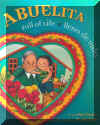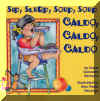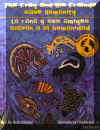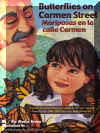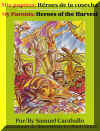 El
cuervito al rescate - Little Crow to the Rescue, Hardcover, Bilingual, Book,
Victor Villaseñor, Felipe Ugalde Alcántara, Elizabeth Cummins Muñoz, Preschool - 2nd Grade,
9781558854307, $16.95
El
cuervito al rescate - Little Crow to the Rescue, Hardcover, Bilingual, Book,
Victor Villaseñor, Felipe Ugalde Alcántara, Elizabeth Cummins Muñoz, Preschool - 2nd Grade,
9781558854307, $16.95
Author : Victor Villaseñor,
Illustrator : Felipe Ugalde Alcántara, Translator : Elizabeth Cummins Muñoz
Preschool - 2nd Grade
El Cuervito al rescate - Little Crow to the Rescue
 El
cuervito al rescate - Little Crow to the Rescue, Hardcover, Bilingual, Book,
Victor Villaseñor, Felipe Ugalde Alcántara, Elizabeth Cummins Muñoz, Preschool - 2nd Grade,
9781558854307, $16.95
El
cuervito al rescate - Little Crow to the Rescue, Hardcover, Bilingual, Book,
Victor Villaseñor, Felipe Ugalde Alcántara, Elizabeth Cummins Muñoz, Preschool - 2nd Grade,
9781558854307, $16.95
$945.00 for the Bilingual Collection Blue Books Set, Including 20%-Off, Free Shipping, and No Sales Tax : 65 Hardcover Bilingual Books and 10 Softcover Bilingual Books
 A
colorful folktale about the natural world by a renowned Chicano writer.
A
colorful folktale about the natural world by a renowned Chicano writer.
Little Crow and Father Crow sit on the branch of a tall tree surveying the freshly planted corn field. Father Crow tells Little Crow that the human father and son they see working in the fields do a lot for crows. They plant corn, they move water, and they feed the crows with their fields. The crows sing their gratitude to the farmers, but in spite of their efforts to sing their best songs, the farmers don’t like the crows. As they watch, the tricky farmer bends to get a rock. He hides it by the side of his leg, and when they get in close range, the farmer launches his missile at the crows. But Little Crow and Father Crow are much too fast for him. They fly overhead, laughing and singing. Other crows are not so lucky, like Uncle Fly-Too-Late whose wing was broken when a farmer threw a rock. Little Crow is troubled. What if the farmer picked up a rock when Little Crow wasn’t looking? What if Little Crow couldn’t get away fast enough? Soon, Little Crow has an idea that just might save all the crows.
 Listen to
Vienna Rose read Little Crow to the Rescue to you. A marvelous example of the magical encounter
between a child and books that we wish for all children.
Listen to
Vienna Rose read Little Crow to the Rescue to you. A marvelous example of the magical encounter
between a child and books that we wish for all children.
School Library
Journal :
Grade 2-4–In this traditional tale, recounted by a father to his son, a crow
warns his offspring about the treachery of humankind. He explains that, despite
all that they have learned about survival from animals in the wild, humans
cannot be trusted to remember the debt they owe to them. As Father Crow lectures
on, he warns the youngster against letting a farmer who has bent down and picked
up a rock get close enough to throw it. Little Crow draws his own conclusions.
It would be wise, he tells his father, if the birds were to fly away any time
they spot people. To this day, a flock of birds will take to the sky rather than
let a human stray too close. The story comes full circle with the man
explaining, So, you see mijo, this is why you can never catch a crow. The
English and Spanish texts are presented on the same page, separated by a small
picture. Both texts are grammatically correct and well crafted. The colorful
stylized illustrations resemble patchwork quilts or stained glass.
Booklist : PreS-Gr. 3. Villasenor shares a childhood story, passed down from his
great-grandfather. A boy tries to catch the crows eating the chicken feed, but
the birds always take wing. The boy's father tells of a father crow and his son,
perched at the side of a cornfield. Father Crow tells Little Crow that, despite
crows' love for humans, people show little affection in return. Father Crow's
advice: fly away if you ever see a human pick up a rock. Although Little Crow
watches and learns from his father, he adds his own spin to his father's advice.
Alcantara's intensely colored, stylized art shows a natural world full of bright
sunlight, richly shadowed crow feathers, and backgrounds with subtle layers of
color. The Spanish translation is thoughtfully done, appropriately colloquial,
and resembles the English in its pacing. The text isn't particularly lyrical in
either language; the book's strength lies in its traditional origins, its
striking illustrations, and the overall message that, occasionally, children can
teach their parents a thing or two.
Bilingual
Collection Blue Books :
